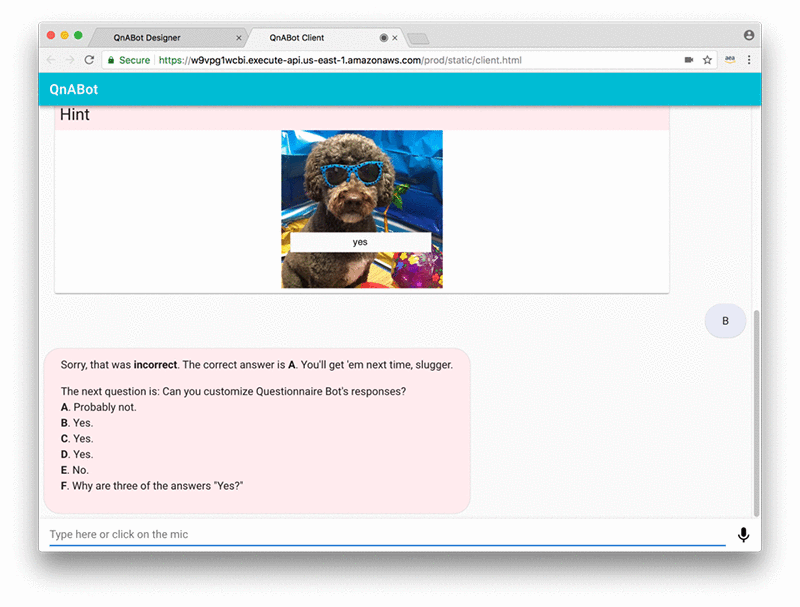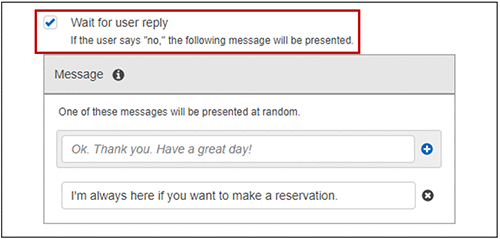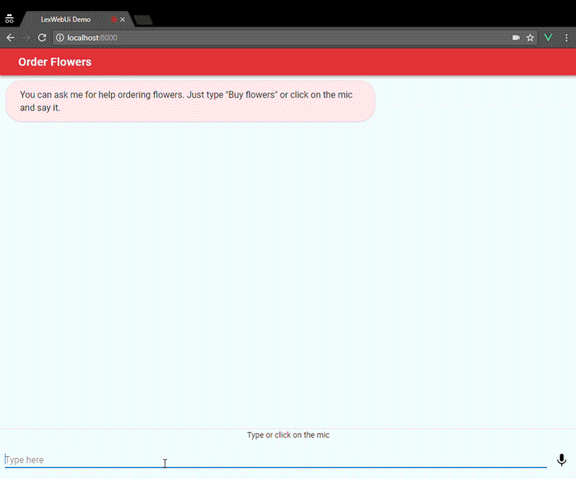Artificial Intelligence
Category: Amazon Lex
Managing your expenses with Amazon Lex
This is a guest post by Rob Whelan, Solutions Architect at Relus Cloud. When people ask me what impact artificial intelligence (AI) will have in the enterprise, I like to say that AI will relieve people from doing repetitive things. We’re not wired to do mindless tasks over and over—but computers are. That’s why self-driving […]
Announcing the Artificial Intelligence (AI) Hackathon: Build Intelligent Applications using machine learning APIs and serverless
Amazon Web Services (AWS) brings image and video analysis, natural language processing, speech recognition, text-to-speech, and machine translation within the reach of every developer. With machine learning (ML) services by AWS, you can plug in prebuilt AI functionality into your apps without having to worry about ML models. Thousands of developers have used Amazon ML […]
Amazon Lex integration with Genesys PureCloud IVR now available
We are excited to announce the general availability of the Amazon Lex and Genesys PureCloud integrated interactive voice response (IVR) solution. First launched in preview at re:Invent 2017, the solution allows Genesys customers to integrate Amazon Lex chatbots into the PureCloud IVR flows to provide an enhanced conversational experience. About Genesys PureCloud The Genesys PureCloud platform […]
Build a document search bot using Amazon Lex and Amazon OpenSearch Service
September 8, 2021: Amazon Elasticsearch Service has been renamed to Amazon OpenSearch Service. See details. People spend a lot of time searching documents. First you go to your document store and then you search for relevant documents. If you’re looking for a text inside the document, then you need to do another search. In this […]
Creating virtual guided navigation using a Question and Answer Bot with Amazon Lex and Amazon Alexa
If our users are using Question and Answer Bot (QnABot), and they are getting the right answers for their questions, what else can you do for them? Now you can create a bot to guide them through a series of logically connected answers. This means, for example, that the bot can guide them through the […]
Create a questionnaire bot with Amazon Lex and Amazon Alexa
In the Create a Question and Answer Bot with Amazon Lex and Amazon Alexa blog post, we showed you how you could create a QnABot (pronounced “Q and A Bot”) for a situation in which your users have questions and you have answers. Now, what if this situation were reversed? What if you could ask […]
Enhance Your Amazon Lex Chatbots with Responses
You can now add responses to your Amazon Lex chatbots directly from the AWS Management Console. Use responses to set up dynamic, engaging interactions with your users. Using responses Responses are the final element of a bot’s intent, and are displayed to users after the fulfillment of the intent is complete. A response might include […]
Deploy a Web UI for Your Chatbot
December 2023: Post was updated with introduction of streaming capability – See latest releases in Github September 2021: Post was updated with introduction of Transfer to Amazon Connect live chat You’ve built a very cool chatbot using Amazon Lex. You’ve tested it using the Amazon Lex console. Now you’re ready to deploy it on your […]
Build an Amazon Lex Chatbot with Microsoft Excel
This is a guest post by AWS Community Hero Cyrus Wong. Our institution (IVE) here in Hong Kong has begun experimenting with Amazon Lex in teaching, research, and healthcare. We have many non-technical employees, such as English teachers in IVE and therapists from IVE Childcare, Elderly and Community Services Discipline, who don’t have the technical […]
How Astro Built Astrobot Voice, a Chatbot for Email
This is a guest post by Roland Schemers, CTO of Astro Technology, Inc. Astro, in their own words, “creates modern email apps for Mac, iOS and Android, powered by artificial intelligence, built for people and teams. With Astrobot Voice, an in-app email voice assistant, you can now read, manage, and reply to emails without leaving Astro’s […]









